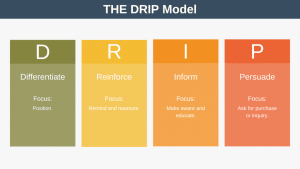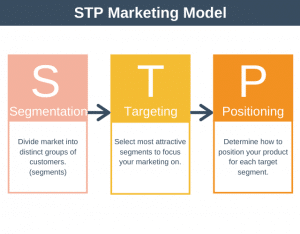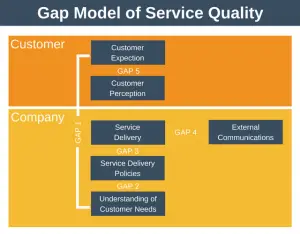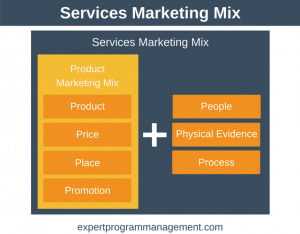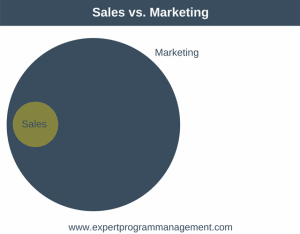The AIDA model is a marketing communications model showing you the cognitive steps prospects take before purchasing your product.
It is one of the oldest marketing models in existence, having been created in 1898 by Elias St. Elmo Lewis, an American advertising advocate who wrote prolifically about how advertising could be used to educate the public.
Despite its age, the AIDA marketing model is still widely used in everything from direct response newspaper campaigns to digital marketing campaigns.
The AIDA Model
The AIDA model consists of four linear steps a prospect goes through when deciding to buy your product.
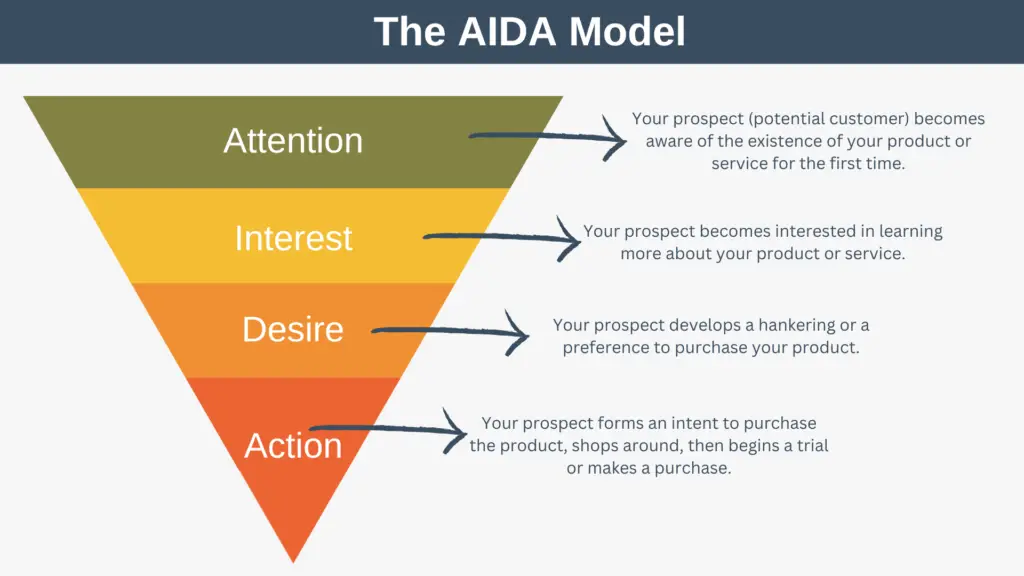
The four steps of the AIDA model are:
- Attention: your prospect (potential customer) becomes aware of the existence of your product or service for the first time.
- Interest: your prospect becomes interested in learning more about your product or service.
- Desire: your prospect develops a hankering or a preference to purchase your product.
- Action: your prospect forms an intent to purchase the product, shops around, then begins a trial or makes a purchase.
As a set of prospects moves from one step to another within the model, the total number of prospects decreases. A relatively large group of prospects become aware of your product through advertising. A subset of those people move to the Interest step, then a subset of those prospects move to the Desire step. Finally, an even smaller subset moves to the Action or purchase step.
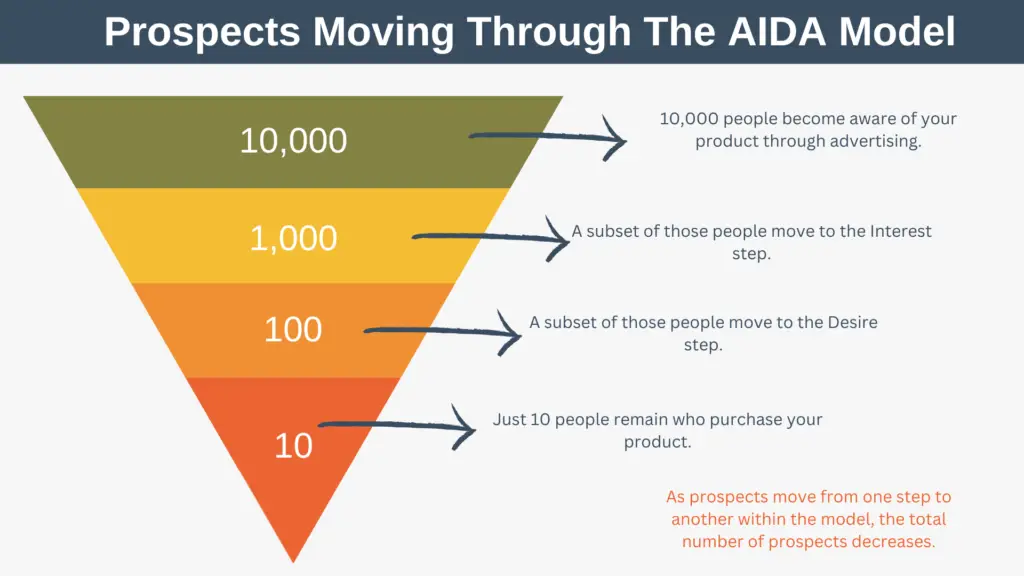
This logical flow of prospects is often referred to as a marketing funnel or purchase funnel.
How to Use The AIDA Model
The AIDA model is best used to create or review a marketing campaign. It isn’t suited to situations where you want to check the effectiveness of a single element or single creative within the campaign.
Let’s look at the critical questions you should be asking yourself during each stage of the model, and then we’ll look at two examples of the AIDA model in action.
1. Attention
In this first step of the model, the critical question you need to answer is:
How will you make potential buyers aware of your products or services?
You can do this in many ways, including attending trade shows, radio advertising, television advertising, online display advertising, and content marketing.
2. Interest
In this step of the model, the critical question you need to answer is:
How will you make potential buyers interested?
Your goal in this stage is to establish trust and engage your prospects so they are interested in moving to the next step. Two ways to do this include providing your prospects with information or statistics they find useful or helping them to solve a problem they’re likely to have.
The higher the quality of the information you provide in this stage, and the more it helps them, the more likely they will move to the next step.
3. Desire
In this step of the model, the critical question you need to answer is:
How will you make prospects see your product or service as desirable?
Techniques you can use at this stage of the AIDA model include:
- Using testimonials to show how others love using your product.
- Showing case studies to demonstrate how others benefited from using your product.
- Offering product demos to highlight the benefits of your product.
- Displaying product comparison tables illustrating why your product is better than your competitors.
The better you are at creating desire, the more prospects will move to the final step of the model.
4. Action
In the final step of the model, the critical question you need to answer is:
How will you call prospects to action?
Again, multiple mechanisms exist to do this, including free trials, special offers, consultations, and face-to-face demos.
Top Tips
Before you rush into using the AIDA model, it is important to take the time to create your customer avatar (aka buyer persona), which is a representation of your perfect customer.
Doing this will help you target your advertising more precisely, engaging the right type of prospect for your business, ultimately saving you marketing dollars.
Once you’ve used the AIDA model to determine your marketing communication, combining it with A/B testing to improve your ROI (return on investment) at each funnel level is a good idea.
AIDA Model Template
If you’d like to use the AIDA model, we’ve provided an ADIA Model Template, which you can see below and download here.
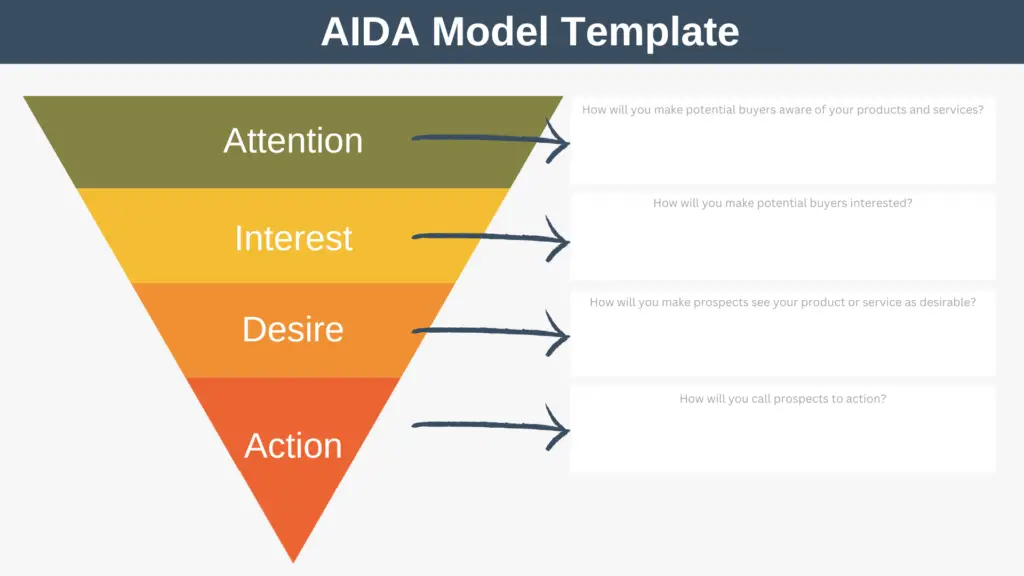
AIDA Model Example 1: Real Estate
For our first example, we’ll consider an example from the offline world. For this example, imagine you are a realtor or estate agent who wants to sell more houses in your area. How can you do this using the AIDA model?
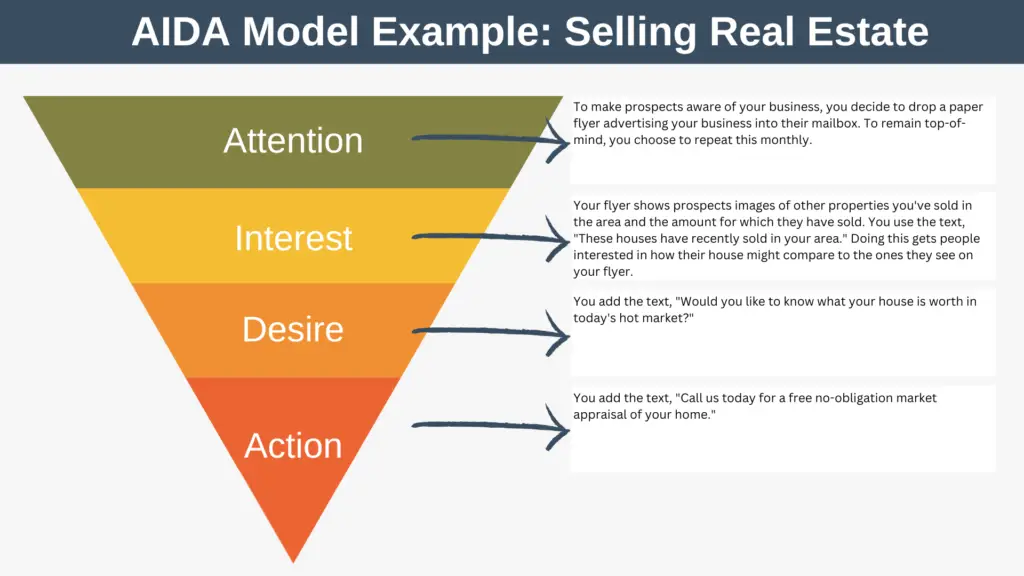
One way would be to use a flyer that you post through the mailboxes of your best potential customers.
To make prospects aware of your business, you decide to drop a paper flyer advertising your business into their mailbox. To remain top-of-mind, you choose to repeat this monthly.
To get prospects interested in what you offer, your flyer shows prospects images of other properties you’ve sold in the area and the amount for which they have sold. You use the text, “These houses have recently sold in your area.” Doing this gets people interested in how their house might compare to the ones they see on your flyer.
To create desire, you add the text, “Would you like to know what your house is worth in today’s hot market?”
Finally, to get them to take action, you add the text, “Call us today for a free no-obligation market appraisal of your home.”
AIDA Model Example 2: Online Shop Selling Backpacks
For our second example, I want you to imagine you run an online store selling hiking backpacks direct to consumers. How might you go about increasing your sales using the AIDA model? One possible way is shown below.
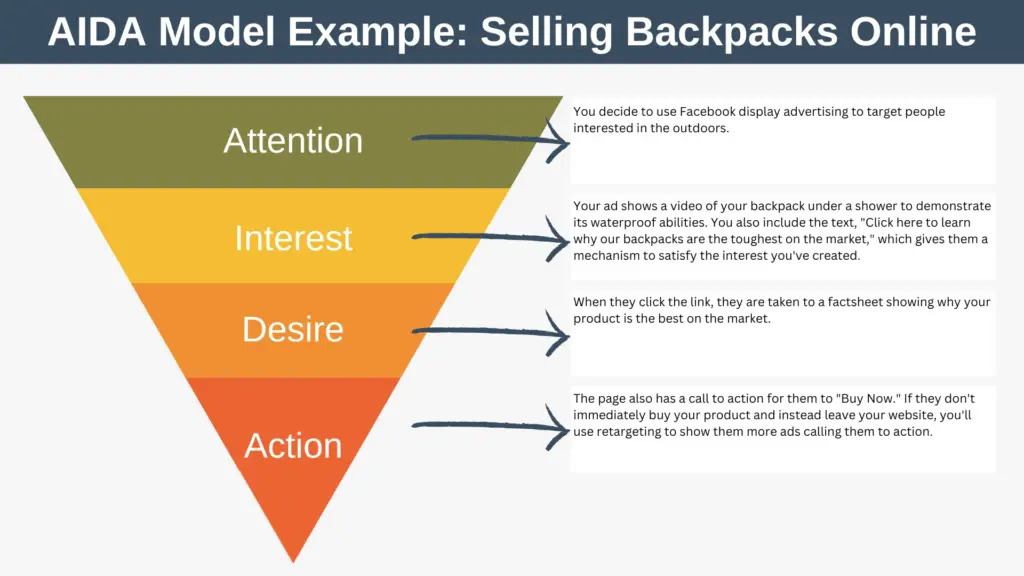
To make prospects aware of your backpacks, you decide to use Facebook display advertising to target people interested in the outdoors.
To capture interest, your ad shows a video of your backpack under a shower to demonstrate its waterproof abilities. You also include the text, “Click here to learn why our backpacks are the toughest on the market,” which gives them a mechanism to satisfy the interest you’ve created.
When they click the link, they are taken to a factsheet showing why your product is the best on the market.
The page also has a call to action for them to “Buy Now.” If they don’t immediately buy your product and instead leave your website, you’ll use retargeting to show them more ads calling them to action.
Advantages and Disadvantages
There are several advantages and disadvantages associated with the AIDA model.
Advantages
- It’s easy to understand and use. The simplicity and focus on human nature mean it is still in use today after more than one hundred years.
- Instead of focusing on product features, the model helps marketers focus on the needs of their customers.
Disadvantages
- As humans, we don’t always take action linearly. The AIDA model isn’t applicable to impulse buyers or very short sales cycles.
- The model only considers first-time purchases and not other important aspects of marketing, such as branding, positioning, customer retention, cross-selling, or up-selling.
- It takes no account of what should happen after a sale is made.
Summary
The AIDA model is a marketing communications model that can help tailor your marketing to suit the human process your prospects go through before making a purchasing decision.
Doing this will make your marketing campaigns more successful than if you just focus on the shopping list of features your product or service contains.

